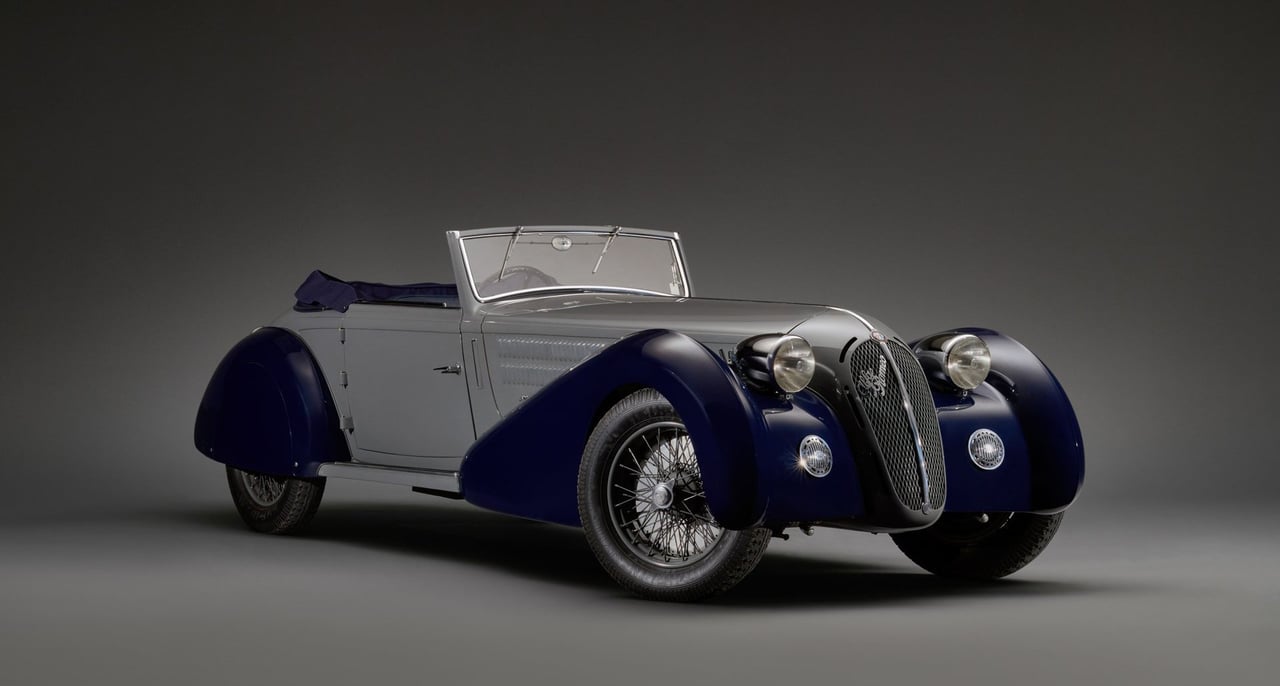
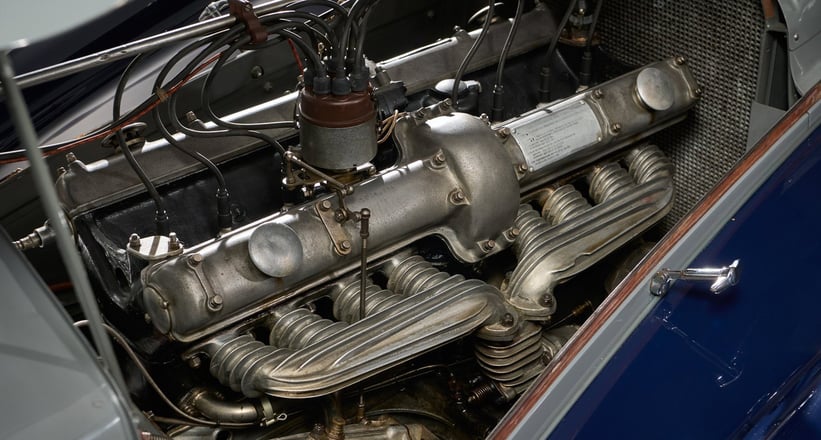
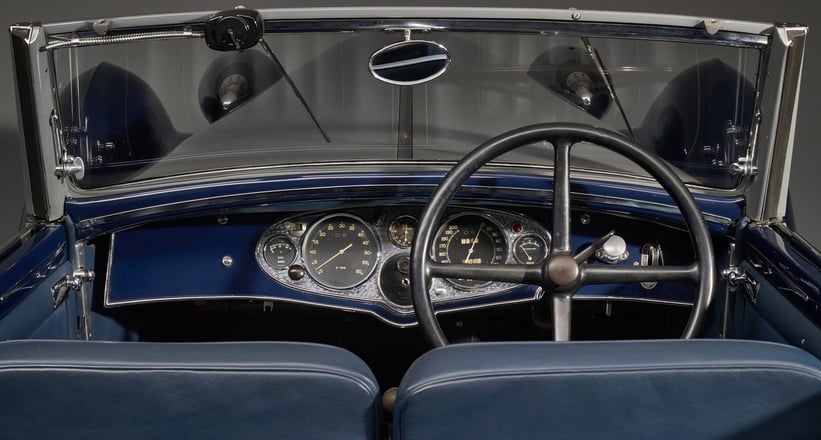
188. That’s the entire number of Alfa Romeo 8Cs that were produced over a three-year period commencing in 1931. All of those 188 were destined to be raced, boosted by the competitive and commercial successes notched up by the car’s sibling, the 6C. Directors at Alfa Romeo decided to develop a new straight-eight-cylinder engine, designed to power even more luxurious high-performance cars, and to succeed in demonstrating the brand’s technical sophistication, and so, the 8C was born.
While many were hammered around the world’s best circuits at the time, some slipped through the cracks and were used as the ultimate showcase of style and road presence for the rich and famous. This example heading to RM Sotheby’s upcoming sale in Milan on May 22nd, just two days before this year's Concorso d'Eleganza Villa d'Este, is exactly that, a beautiful piece of automotive jewellery that has dominated not racetracks, but concours lawns almost from the moment it was hand-finished back in 1932. So imagine making the winning bid on this breathtaking Alfa Romeo 8C 2300 Lungo on Thursday, then driving it up to Villa d’Este on Friday, parking it in the driveway to enjoy a café on the terrace – and casually stealing the show from all the other participants lining up for the concours.
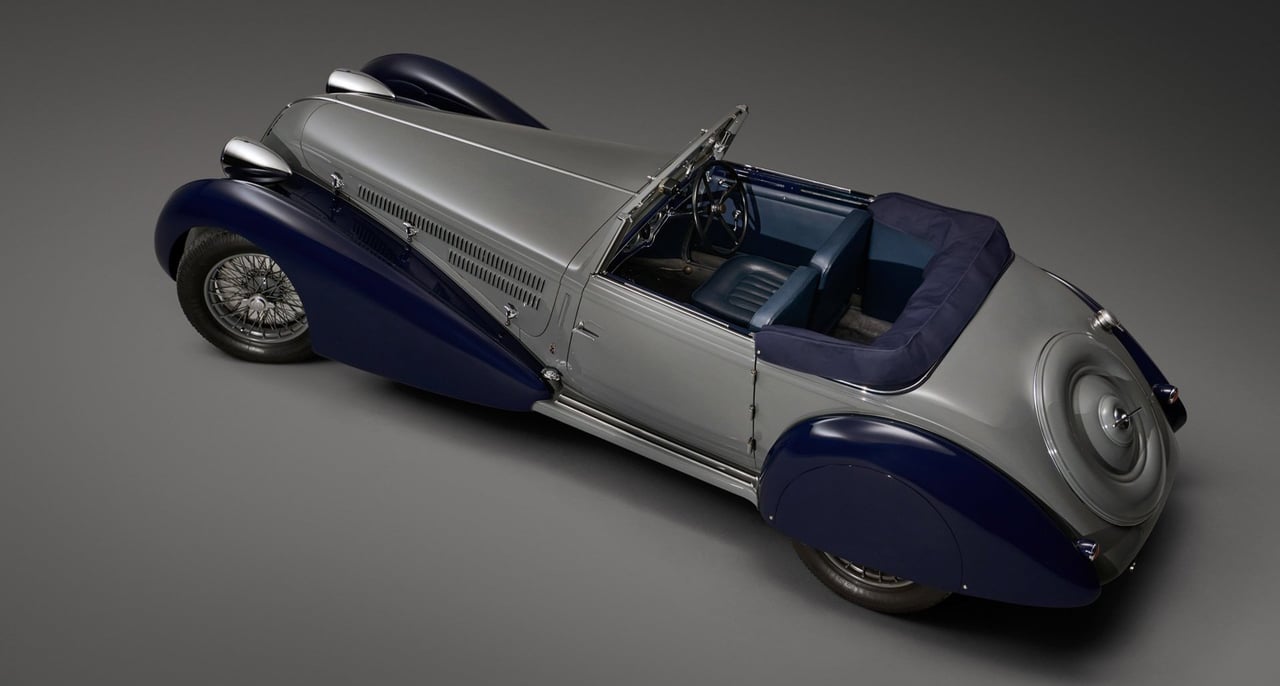
After years of rumours and speculation about the car, documentation containing key information about the bespoke bodywork and the car's origins have recently been discovered, allowing historians to delve even deeper into this wonderful piece of history. This long-chassis 8C was fitted new with bespoke, cabriolet two-seater coachwork from Pinin Farina, after which it was first registered on 23 November 1932 in Turin to HRH Prince Filiberto of Savoy-Genoa, Duke of Pistoia and Genoa. By the following April, the Duke was eager to show off his new machine and exhibited the 8C at the exclusive Monte Carlo Concours d’Elegance, where it was narrowly beaten for Grand Prize honours by the 8C of Baroness Maud von Thyssen. What are the chances of being beaten by another 8C?
While now icons of motorsport like Tazio Nuvolari were busy dominating events like the Italian Grand Prix at Monza race-track, as well as the Targa Florio during the opening years of the 1930s, this coach built beauty would spend its time being enjoyed by the Duke, before being sold in 1937 to noted racing driver Vittorio Belmondo. It is from here that the car took on an entirely new look, and Belmondo is believed to have commissioned an update to the original bodywork, including a new “waterfall” type grille, as well as reprofiled wings and several trim pieces. Unusually by today’s standards, but not so uncommon in period, the 8C was also registered as a new car, and therefore sported a new number plate “GE-24759”. Stylistically, the coachwork changes closely matched other 8C commissions created by Graber or Worblaufen.
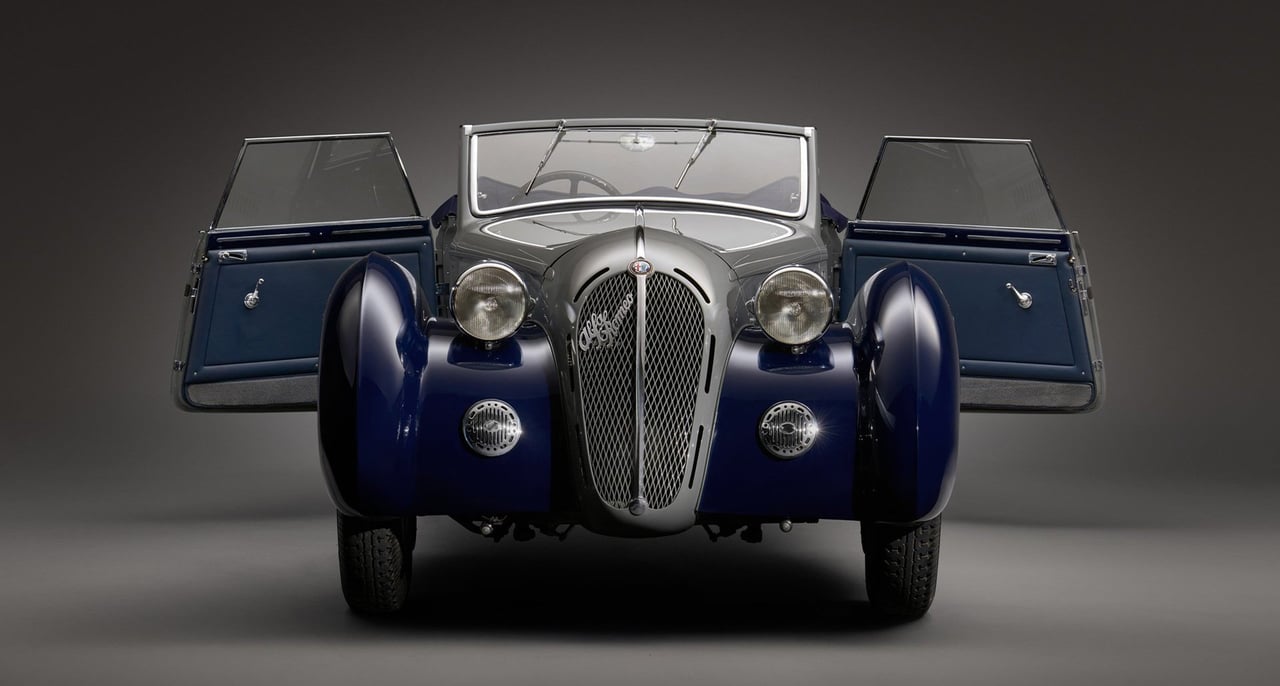
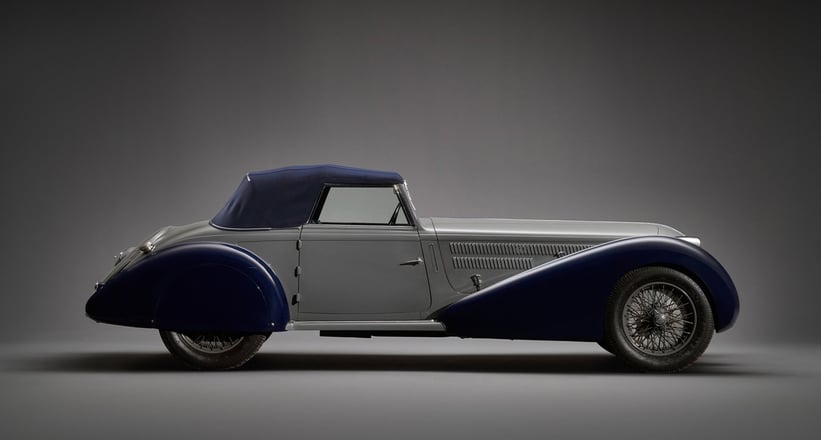
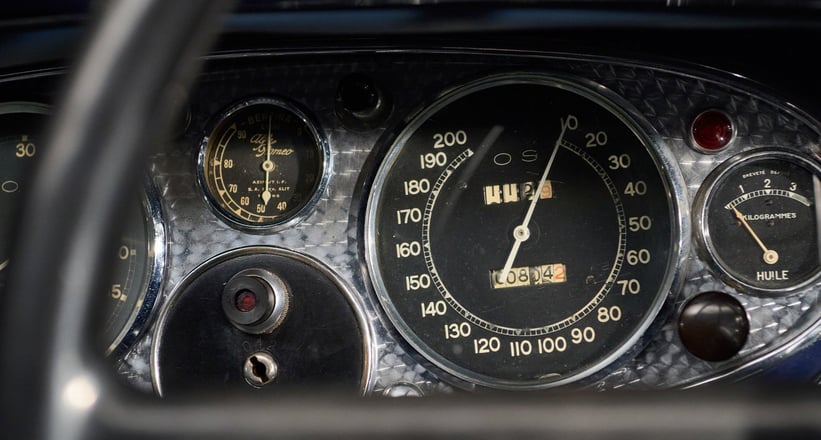
After a few decades of being passed around European owners, the Lungo Cabriolet would eventually head to the UK, where it was snapped up by Brian Eckersley in 1956. Then just 21-years-old, this Italian supercar was not only an immediate head-turner, but a mightily powerful thoroughbred draped in elegant bodywork. Eckersley would enjoy the car for an incredible 43 years, adding his own touch during his early years of ownership by updating the coachwork with additional chrome, while the incredible work of Belmondo’s aerodynamic pre-war updates remained as impressive as ever.
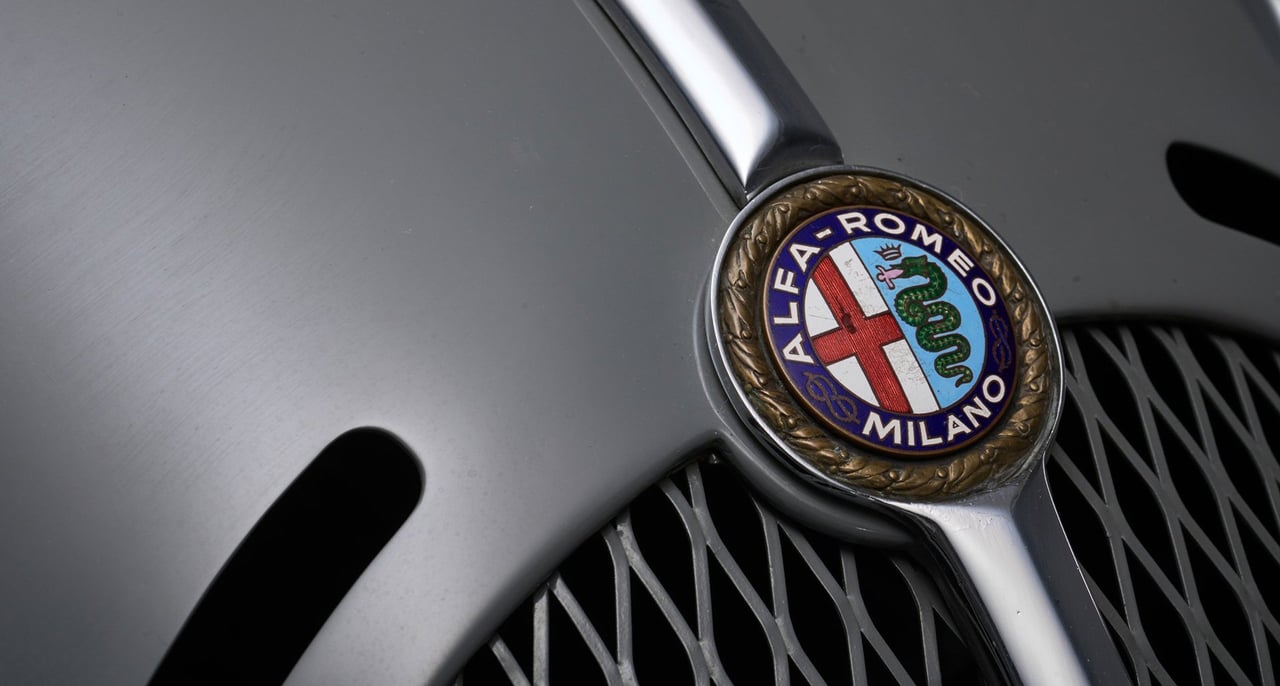
In 1999, the 8C would arrive into the garage of its current owner, and shortly after the car was sent to Italy for a comprehensive restoration with victory on the agenda. Not victory at the racetrack like so many 8Cs, but with the intent of entering all of the world’s finest concours for pre-war coach built automobiles.
Over a five-year period between 2000 and 2005, the car received every bit of Cremonini Classics’ attention, time and expertise. Forensic focus was taken on preserving and rebuilding original parts wherever possible, a key aspect considered by the jury during concours events. Of course, being almost a century old, some components were passed the point of saving, and instead were suitably recreated or replaced with period-correct originals.

Under the elongated, louvered bonnet, the 8C’s supercharged straight-eight engine was entirely rebuilt, the original cylinder head was repaired by marque specialist Gianni Torelli, and a replacement set of correct-ratio gears were sourced and installed in the gearbox. After many years painted in various shades to suit the tastes of previous owners, the restoration team discovered grey paint chips and blue leather fragments, allowing the team to faithfully restore the car to its original colour scheme, which suits its curvaceous coachwork to perfection.
Each of the 188 examples of the 8C Alfa Romeo built is special. Whether they survived their onslaught dominating the racetrack, or were pampered for decades by proud concours-entering owners, models like the 8C were the true supercars of their day, proudly embodying the traits that would attract an army of Alfisti in the decades to come. This true piece of Italian automotive history is set to go under the hammer at RM Sotheby’s upcoming sale in Milan on May 22nd, with an estimate of 3,500,000 and 4,500,000 Euros, a princely sum, but that’s the price to pay for an almost guaranteed spot and a worthy shot at claiming victory at just about any concours event around the world!
















